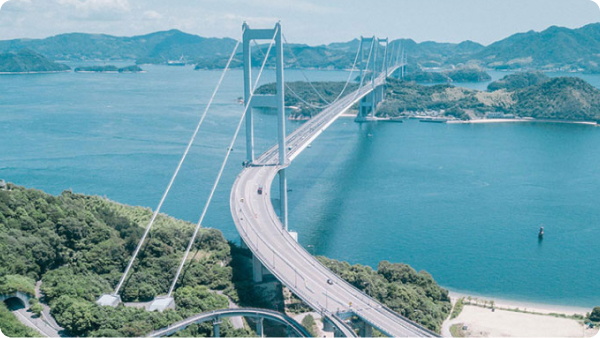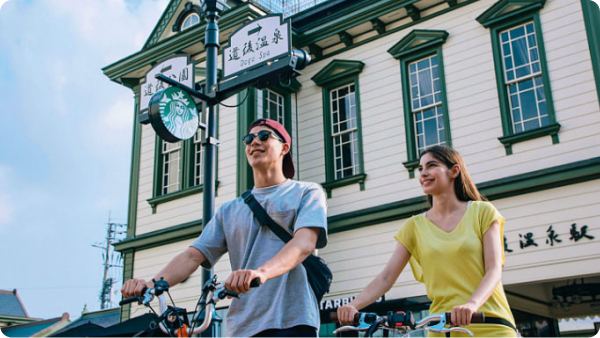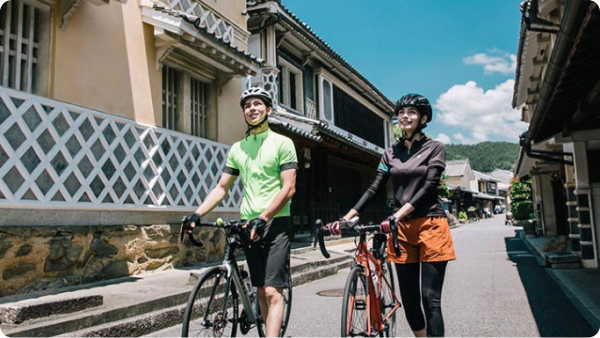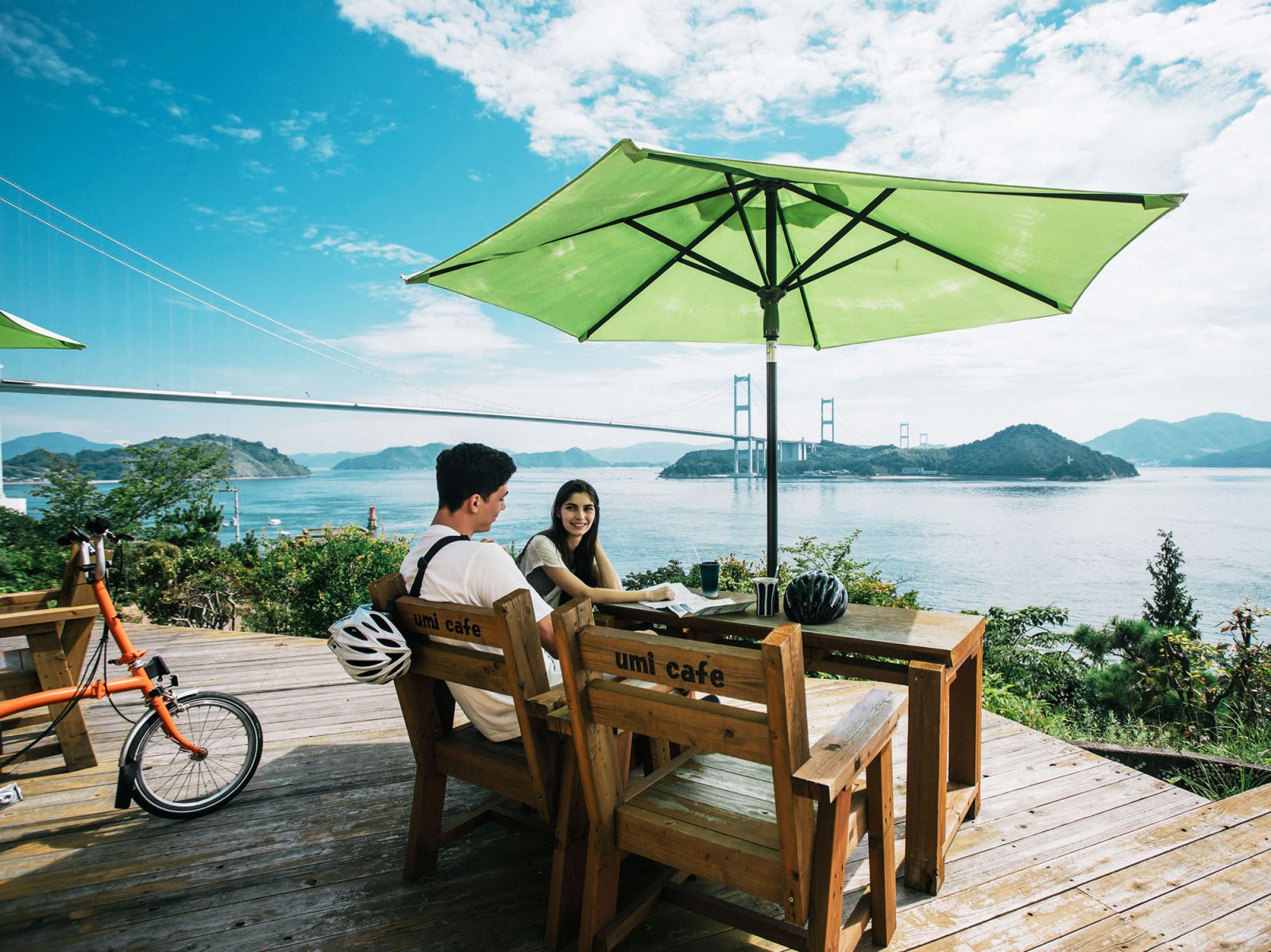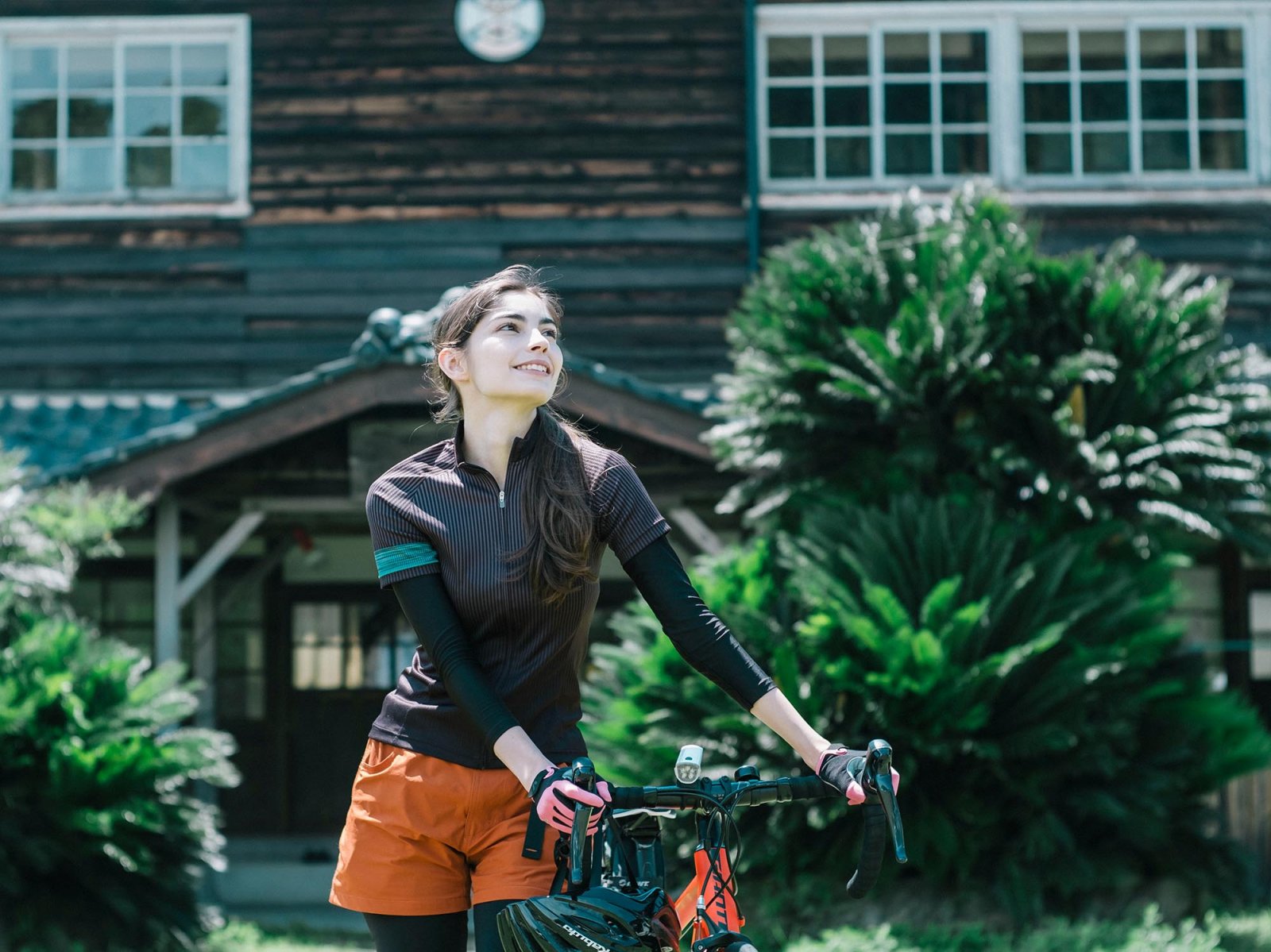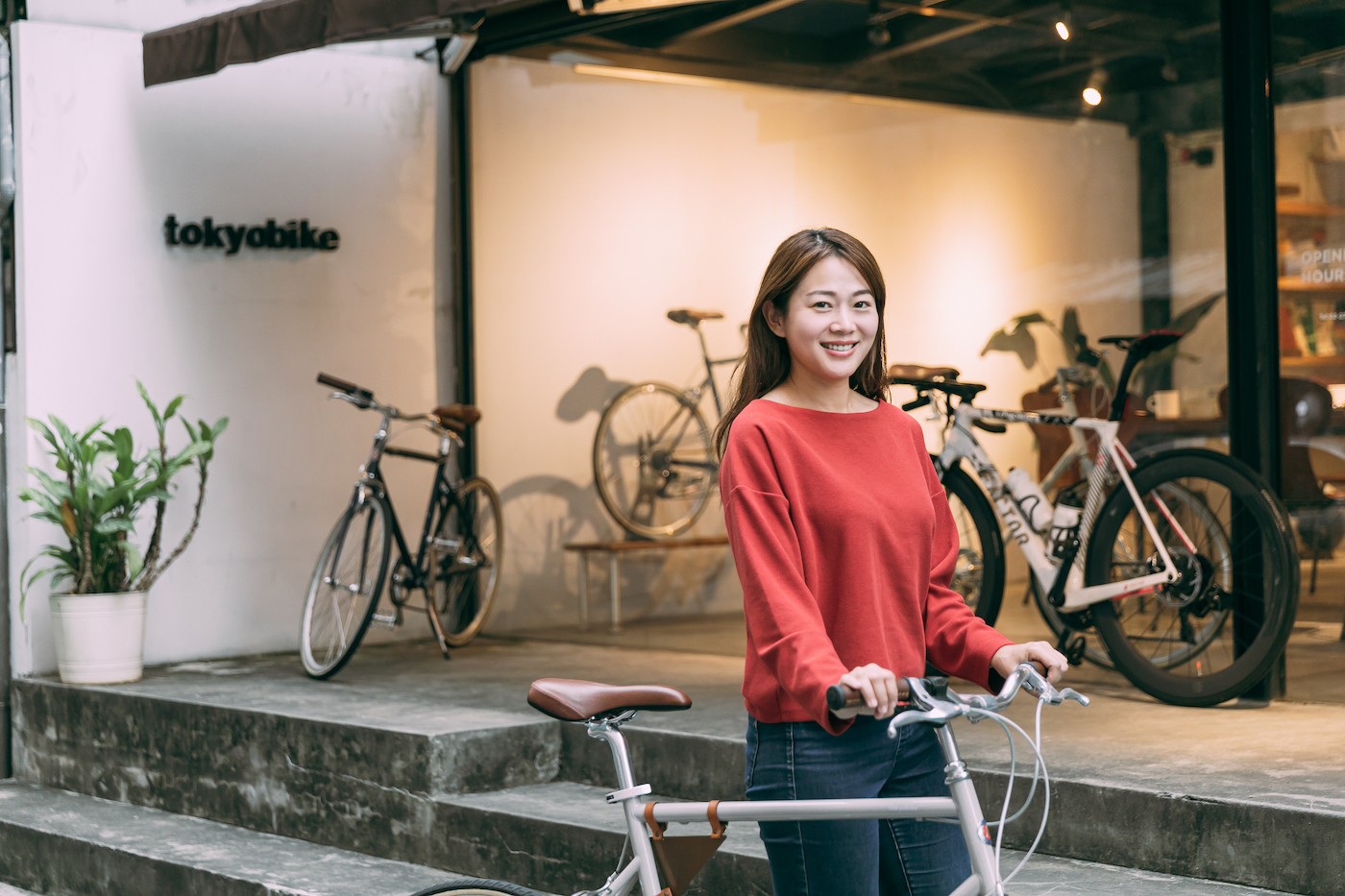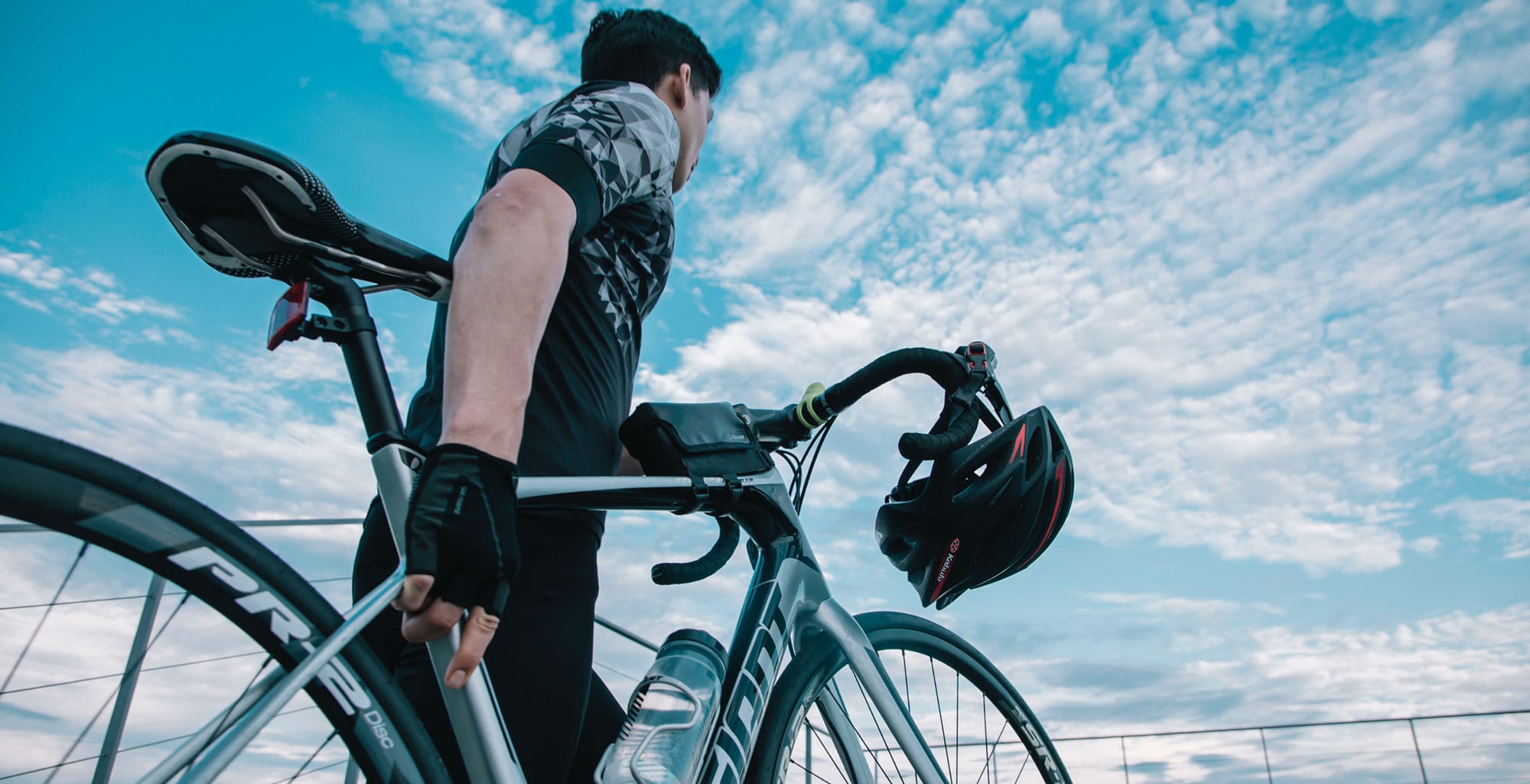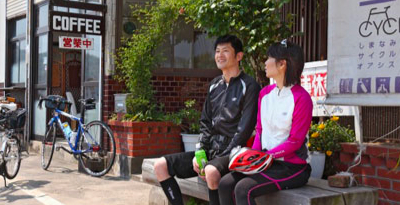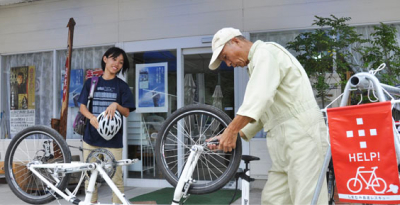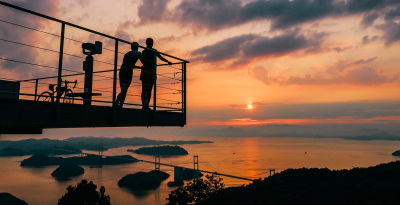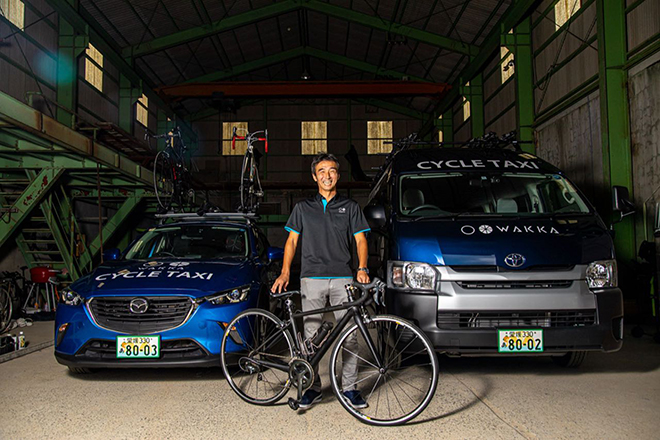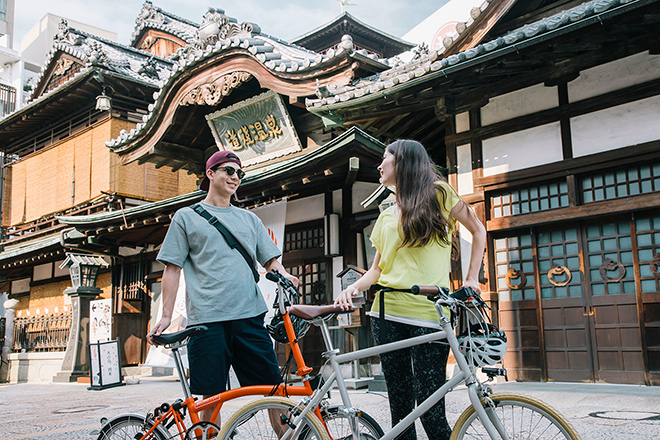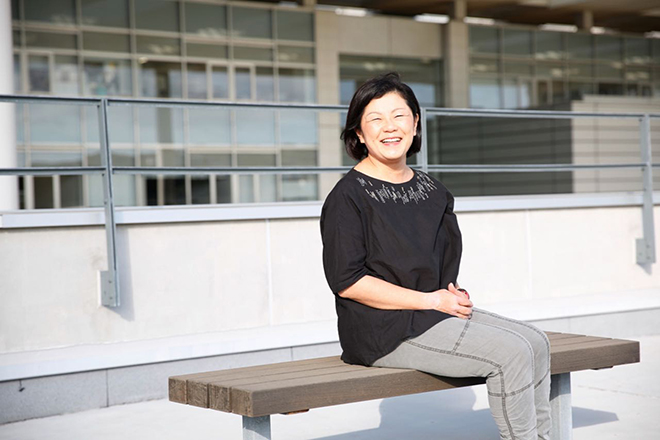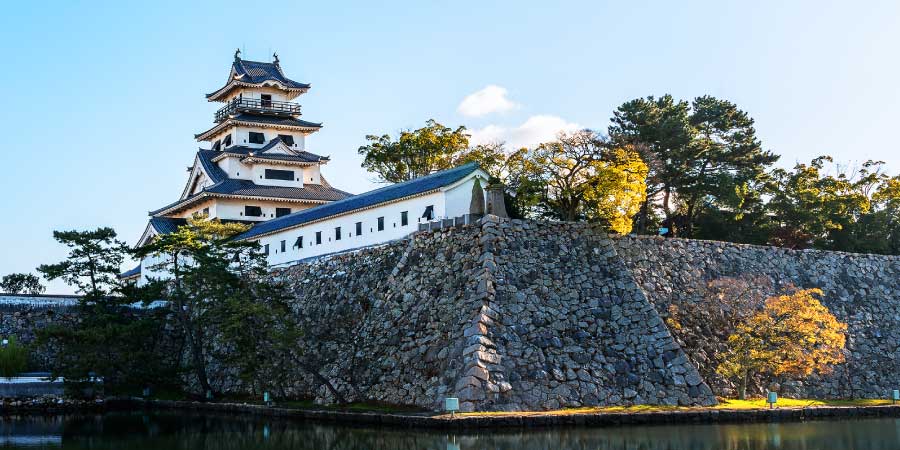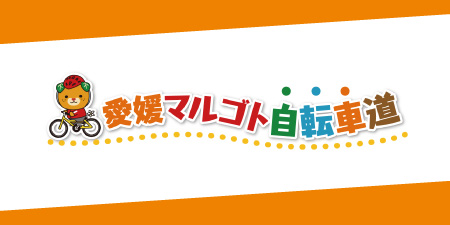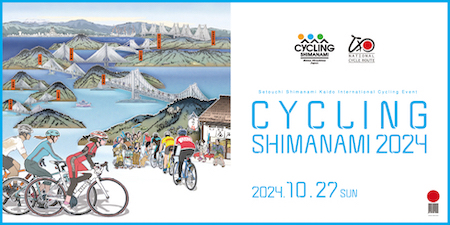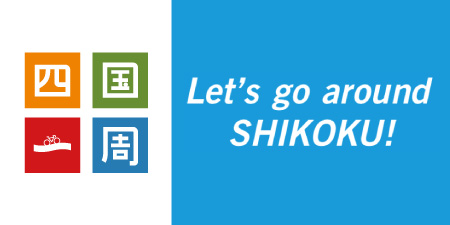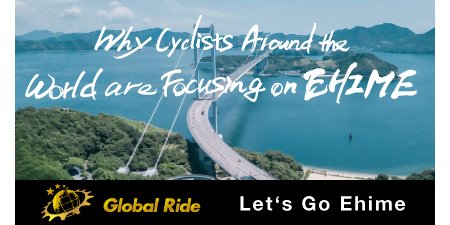Cycling in the COVID-19 pandemic—Five elements of riding etiquette
Cycling in the COVID-19 pandemic—Five elements of riding etiquette

The COVID-19 pandemic is forcing us to change the way we cycle. Since June 2020, Ehime prefecture, home to a large number of scenic cycling spots—including the world-renowned Shimanami Kaido—has been promoting and educating cyclists with our Safe Cycling campaign that sets out etiquette for preventing infection.
What exactly do we need to do to enjoy cycling, which keeps us fit and relaxed, while still prioritizing safety? We talk to Ehime local, Yoshikazu Kawakami, who worked on putting together the Safe Cycling campaign, and Makoto Ayano, editor-in-chief of Cyclowired, an informational website for cycling fans, about Safe Cycling content, and cycling etiquette in a COVID-19 world.
Keep numbers low and keep your distance—Five guidelines for preventing infection when cycling
– Tell us about the Safe Cycling initiative.
Kawakami: Here in Japan, we began to feel the impact of COVID-19 between February and March of 2020, and that was when we first began to hear talk of the need to have guidelines for cyclists. At that point, the virus was completely unknown, so everyone was feeling around in the dark until sports federations and the like, particularly in Europe (which leads the world in cycling) began announcing guidelines. Based on the content of these, we created our own Safe Cycling guidelines, tailoring them to fit conditions in Ehime.
These guidelines are described by five keywords—Health, Guard, Keep, Clean, and Minimum—that describe points of etiquette we should follow when cycling.

Five elements of Safe Cycling etiquette
Kawakami: For example, we don’t recommend wearing a standard mask on long rides because of the associated risk of issues like heatstroke or sunglasses fogging up. Instead we ask cyclists to take measures such as covering their mouths with highly breathable neckwear available from cycle shops when riding, and putting on a mask when stopping by roadside stations or other locations to take a break.
As you’ll know, it is also important to carry out basic hygiene measures such as washing hands and rinsing your mouth, as well as travelling in small groups and maintaining a good distance between bicycles.

Ehime’s Yoshikazu Kawakami—To prevent COVID-19 from spreading further, the interview was held online
– Mr. Ayano, you’ll no doubt remember posting an article back in April 2020 entitled, “Riding in the COVID-19 pandemic” on Cyclowired, the cycling website for which you are editor-in-chief.

Cyclowired, the website where Ayano works as chief editor
Ayano: You’re talking about the article that focused on introducing the guidelines introduced in March by the Royal Dutch Cycling Union (KNWU), right? That article generated a huge amount of traffic, making it clear just how much all of the cyclists out there wanted guidelines for cycling during the COVID-19 pandemic.
This article also introduced the #ridesolo hashtag that originated in Europe and was one of the guidelines from KNWU. In the early days “it’s best not to ride if you can avoid it” and “If you ride, ride solo” were the kind of basic concepts discussed.
However, if it wasn’t for COVID-19, cycling on your own is not something we would recommend because of the risk of mechanical problems. Plus, it’s been some time since infections began spreading, and as far as I know, there have been no reports of cases where people have been infected with the virus through cycling. That’s why, in Europe too, we have seen a move to restart group rides with careful measures in place such as social distancing.

Makoto Ayano
Paris to receive a cycle-centric makeover, and why Ehime, home to Shimanami Kaido, took its own measures
– Isn’t it somewhat unusual to see a local government taking a central role in launching a cycling etiquette campaign like Safe Cycling for COVID-19?
Kawakami: The Shimanami Kaido linking Ehime and Hiroshima attracts around 330,000 cyclists each year—cyclists who come to island hop, cycling over the bridges that connect the islands, and to enjoy the incredible scenery and local cuisine. This number increases every year, and in recent years, visitors coming from overseas locations such as Asia, America, Australia, Europe have been making up an increasing proportion of this figure.
Ehime is also home to a large number of other cycling courses, and these attract not only tourists but also locals who enjoy cycling as part of daily life. This is why it was imperative that Ehime created some rules of etiquette that we hope everyone—both locals and visiting cyclists—will follow.
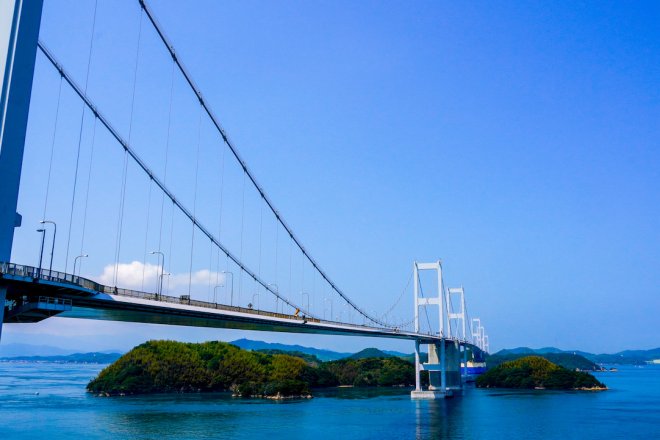
One of the Shimanami Kaido highlights, The Kurushima Kaikyo Bridge that stretches over an incredible 4.105 km
– I’m sure cyclists feel relieved to have rules of safety etiquette promoted in the way you are doing with Safe Cycling.
Ayano: In Paris, France, officials were forced to postpone the Tour de France scheduled for July 2020, and instead it began in late August with each country implementing all possible infection control measures. However, now that a second wave of infections is sweeping Europe, the world is watching with bated breath to see whether the three-week race will make it through to its finish in Paris.
Remarkably, the bicycle is now being reconsidered as a means of transport for locals. Paris has never been an easy city to cycle in, and just as they were about to begin making improvements, COVID-19 broke out. This situation led them to rethink their partiality for underground lanes in enclosed spaces, and instead steer toward making street-level changes such as putting in cycle lanes that would let bicycles be used in the open air.
Provided we take the proper measures, cycling can be a way of preventing lack of exercise caused by staying home and can help people destress.
– You’re right, I think we’re rediscovering the bicycle’s value precisely because we have a situation where people are avoiding going out due to COVID-19.
Cyclists must find their own workarounds to enjoy cycling in a COVID-19 world
– What measures do you yourself take when cycling?
Ayano: Well, for example, each year the cycling club that I belong to holds an event where we challenge ourselves to ride the 300-odd kilometers from Saitama to Niigata. This year, however, we restricted participant numbers, and rode in small socially-distanced groups, taking care not to face each other when we talked during rest breaks.
For accommodation too, we booked single rooms, and at the closing event, took careful measures such as arranging the tables for social distancing and serving the dishes in single portions.

When riding in a group, keep the numbers small and maintain a good distance (Photograph: Makoto Ayano)
– So you’re saying that when cycling in a COVID-19 world, it’s important that cyclists take great care and implement workarounds, right?
Ayano: That’s right. Another thing about cycling in small groups is that it creates more instances where we have to deal with problems by ourselves. For example, we might find ourselves polishing our technique for repairing punctures, or learning ways of avoiding dehydration or how to achieve the right nutritional balance. I’d like everyone to use this opportunity to improve their skills as a cyclist while enjoying cycling suited to their physical condition and energy levels.
– Finally, do you have a message you’d like to share with our readers?
Kawakami: Cycling is good for our health as well as being a wonderful activity that gives us the chance to encounter stunning views and discover regional resources using our own two legs. To ensure we can enjoy these elements, I hope people will bring with them an awareness of the need to avoid catching this coronavirus and remain aware that they could be the one passing it on. I don’t know whether we’ll have to continue infection prevention for one more year or two, but it seems wise to continue from a long-term perspective anyway.
Ayano: Yes, it’s important to be aware of protecting both ourselves and others. And besides, I think that if you were to go out on your bicycle now without taking any measures or showing any awareness, you’d be frowned upon. You know, we want people to enjoy themselves, but also to be considerate of the interests of all cyclists.
If we consider the need to prevent the spread of infection, I think we’re still at the stage where long-distance cycling is problematic. But even so, in instances where we would normally take long distance rides in big groups, we can surely take short-distance rides in small groups, but maybe we can find ways to enjoy cycling in familiar spots, such as riding more often instead. For now, it’s important to find our own workarounds, and clever ways to enjoy cycling.
PROFILE
Makoto Ayano
Editor-in-chief of Cyclowired, the informational website for cycling fans. In addition to annual trips to the Tour de France (the world’s most prestigious bicycle road race) to carry out local reporting, he is also active as a photojournalist for other international and domestic competitions. He himself is a keen cyclist.
PROFILE
Yoshikazu Kawakami
Division Head of the Cycling Lifestyle Promotion Division of the Policy Planning Office of the Project Promotion Department of Ehime Prefecture. He works to revitalize the region by encouraging more people to take up cycling and increasing the nonresident population, with an underlying concept of creating a “new cycling culture” in which cycling fosters health and friendship and brings meaning to life. He is also a cyclist who truly loves bicycles.
Articles you might like
Related Routes & Destinations
We use cookies on this site to enhance your user experience. If you continue to browse, you accept the use of cookies on our site. See our cookies policy for more information.





